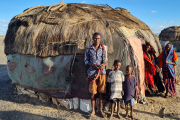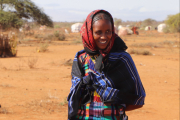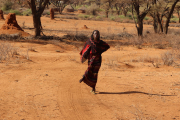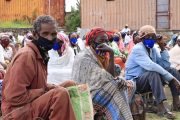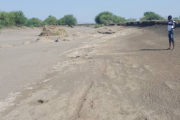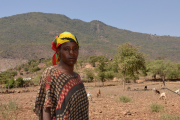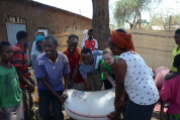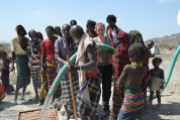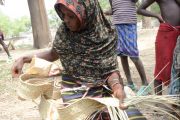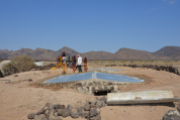Ethiopia has a population of about 113 million, according to the Human Development Report 2021/2022. The country in northeastern Africa faces various challenges such as rapid population growth, locust infestations, droughts, progressive soil erosion and resource shortages. The Tigray conflict between the central government of Ethiopia and regional rulers of the Tigray People's Liberation Front (TPLF) created additional misery-approximately 500,000 people were estimated to have been killed from late 2020 to late 2022. The bloody fighting was accompanied by food blockades, human rights abuses, and the collapse of the health system. A fragile peace agreement has been in place since November 2022. But the food situation in the region remains critical for countless people.
Projects in this country
Food security and peace for the people in the South Omo Zone
In the Southern Nations, Nationalities and Peoples of Ethiopia (SNNPR) region in the southwest of the country, food is scarce due to climatic changes. Plants and animals alike are suffering. The emerging competition for the few resources also results in conflicts between different villages and...Securing food and water supply
The people of Bena Tsemay district in southern Ethiopia are threatened by poverty and the effects of climate change, they suffer from droughts that are only occasionally interrupted by floods. Poor infrastructure and a lack of awareness of the effects of climate change prevent them from...Food security for pastoralists, smallholder farmers and displaced people
In Afar, northern Ethiopia, communities living mainly from livestock and displaced people are suffering from the effects of climate change and conflicts in neighboring regions. They often don't have enough to eat, no access to clean water, and no one to advocate for them. This project provides long...Droughts, locusts and Covid-19: Farmers at their limits
The livelihoods of many small farmers and pastoralists in the Afar region are under threat: More and more pasture and cropland is being lost due to climate-related droughts; the soil is becoming desolate and livestock is dying. At the same time, a plague of locusts is threatening the harvest. The...Livelihood security for smallholder farmers
Climatic changes in southwestern Ethiopia are increasingly leading to crop losses - with severe consequences for the population. Smallholder farmers in Mirab Abaya live mainly on agricultural yields, which are threatened by long periods of drought and periods of heavy rain, drought and flooding. We...Survival aid in times of famine
Extreme rainfall was followed by months of drought, and the harvest spoiled: According to the United Nations, Ethiopia experienced its worst famine in 30 years towards the end of 2016. 9.7 million people are acutely affected by this consequence of climate change and the weather phenomenon El Niño...Water for ten villages
In the Ethiopian region of Afar, the consequences of climate change and the weather phenomenon El Niño are being felt particularly strongly. People are being deprived of the basis for their food because their livestock are dying and water points are drying up. In particular, by delivering water in...Microcredits to boost income
Due to recurring and intensifying droughts, around 1,200 households in Erebti (Afar region) have lost their livelihoods. Many families who used to own herds of animals now have few or no animals. The result is poverty and hunger. We support families with microcredits and guide them on how to make a...Drinking water for one of the hottest regions in the world
Together with the village community and the local partner organization APDA, Sign of Hope enabled the construction of a two-chamber rainwater cistern in northeastern Ethiopia. With the amount of water collected in it, 500 people can be supplied with drinking water for three months.Country reports
There is currently no content.


 Donate now
Donate now
